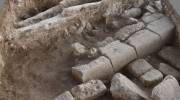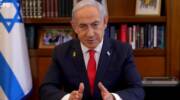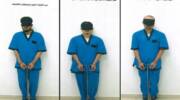Balancing the joyful holiday mood on Rosh Hashana with the solemn nature of the Day of Judgment reminds us that faith in God is what keeps us on the right path in life.
By Rabbi Ari Enkin, Rabbinic Director, United with Israel
On a regular weekday, the primary prayer, the Amidah, contains nineteen blessings. On Shabbat it contains seven.
On Rosh Hashana, however, it contains nine: the three openings blessings, which are the same every day of the year, the three concluding blessings, which are also the same every day of the year, and three “middle” blessings that are unique for Rosh Hashana.
One of these three middle blessings refer to God as King over the world, one refers to the fact that nothing is forgotten from before God, and one is about the role of the shofar in Jewish history.
Why is the Rosh Hashana prayer specifically nine blessings?
The Talmud says that the sages instituted a nine-blessing prayer in order to recall the famous prayer of Chana in which God is mentioned nine times.
The story of Chana is read on the first day of Rosh Hashana. Chana was barren. She was married many years but had no children. She would make an annual pilgrimage to the Mishkan, the Tabernacle in Shilo (The Tabernacle was the Holy Temple, before the true and permanent Holy Temple was built in Jerusalem) to pray for children.
Chana was especially distraught at not having children because her husband’s other wife, Penina, had bore him several offspring. In fact, Penina would even tease Chana about the fact that she had no children. Chana felt embarrassed and useless. She cried her heart out. Chana’s prayers were finally answered on a Rosh Hashana, and nine months later, she gave birth to a son who grew up to become Samuel the prophet.
The story of Chana is not merely a touching story. It seems to be a fundamental principle and message for all of Rosh Hashana. Not only do we read the story in full on the first day of Rosh Hashana, but as mentioned we even have a special prayer, recited on both days of Rosh Hashana (the longest Mussaf service of the year, in fact!), that was formulated with nine blessings to once again recall the story of Chana.
What’s going on over here? Why is the story of Chana so central to Rosh Hashana?
It is explained that Chana’s prayer is especially important because it shows that life is full of ups and downs. For example, Penina had at least 7 children, and eventually so did Chana. However, with each child that Chana bore, one of Penina’s children died! Who would have thought? God can make the rich man poor and the poor man rich, in the bat of an eyelash.
A person’s fortune can change without notice. And so Chana tells us: “Don’t be haughty you who are mighty … you never know when you may fall and the weak one will emerge.”
Chana’s message is truly the message of Rosh Hashana: Life in unpredictable. We have no one to rely upon but God.
And so it is. Rosh Hashana is the day of judgement. We pray, pray, pray. We worry about what kind of year we are going to have A bit of fear and anxiety, perhaps. But on the other hand, we also celebrate. We have elaborate meals, fine meat and wine, and we wear our finest clothes. How are we meant to juggle both themes?
The answer to this question comes from the shofar. The shofar is a beautiful ram’s horn. Often long and elaborate, curved and even glazed. It is a beautiful ritual object. But what kind of sound does the shofar make? It makes a crying sound, a whimpering sound, a staccato sound.
It’s outer appearance leaves one unsuspecting with regard to the kind of sound the shofar makes. It is beautiful on the outside, but it makes a somewhat sad sound.
This is the secret to properly observing Rosh Hashana. On the outside we must be beautiful, happy, and well fed. But on the inside we must have that whimpering attitude, the internal cry of hope and prayer for a sweet new year.

Do You Love Israel? Make a Donation - Show Your Support!
Donate to vital charities that help protect Israeli citizens and inspire millions around the world to support Israel too!
Now more than ever, Israel needs your help to fight and win the war -- including on the battlefield of public opinion.
Antisemitism, anti-Israel bias and boycotts are out of control. Israel's enemies are inciting terror and violence against innocent Israelis and Jews around the world. Help us fight back!























